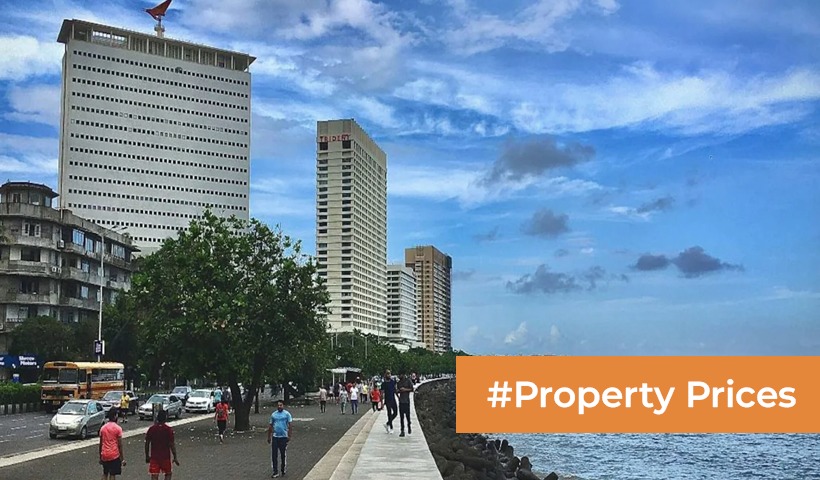Delhi Circle Rates in 2023
As the heartbeat of the nation, Delhi’s real estate market pulsates with energy, reflecting the dynamism and diversity of the capital city. For anyone stepping into the realm of property transactions in Delhi, understanding the circle rates is not just prudent but essential. The circle rate, a fundamental aspect of real estate dealings, plays a pivotal role in shaping property transactions and determining associated costs. This article aims to demystify the intricacies of Delhi’s circle rates in 2023, providing valuable insights for Indian readers navigating the multifaceted landscape of real estate transactions.
Decoding Circle Rates in Delhi:
Defining Circle Rates:
The circle rate, also known as the guideline value or ready reckoner rate, is the minimum valuation set by the government for a specific locality or area. It acts as a benchmark for property transactions, influencing stamp duty calculations and registration charges. Circle rates are revised periodically to align with market dynamics and changing property values.
Basis of Calculation:
The calculation of circle rates involves considering various factors such as the location of the property, amenities in the vicinity, infrastructure development, and overall market conditions. The goal is to establish a fair market value that serves as a reference point for property transactions.
Stamp Duty Implications:
One of the primary applications of circle rates is in the calculation of stamp duty during property transactions. Stamp duty is levied on the higher of the property’s actual transaction value or the circle rate. Therefore, understanding the circle rate becomes instrumental for both buyers and sellers in anticipating the financial implications of a transaction.
Delhi Circle Rates in 2023:
Dynamic Real Estate Landscape:
Delhi’s real estate market is characterized by its diversity, with residential, commercial, and industrial segments catering to different needs. In 2023, the circle rates in Delhi reflect the evolving dynamics of the market, taking into account factors such as location attractiveness, infrastructure development, and demand-supply dynamics.
Locality-Specific Variations:
Delhi is a vast metropolis, and circle rates can vary significantly from one locality to another. Affluent neighborhoods, central business districts, and areas with robust infrastructure often command higher circle rates. On the other hand, emerging suburbs and areas with developing infrastructure may have comparatively lower circle rates.
Residential and Commercial Distinctions:
Circle rates are often categorized based on the type of property, distinguishing between residential and commercial spaces. The circle rate for residential properties may differ from that of commercial properties, considering factors like usage, demand, and market trends in each segment.
Implications for Property Buyers:
Stamp Duty Considerations:
For property buyers in Delhi, the circle rate is a crucial factor in determining stamp duty liabilities. Since stamp duty is calculated based on the higher of the transaction value or circle rate, buyers need to be cognizant of the potential financial implications when planning their property investment.
Negotiation Dynamics:
While the circle rate provides a reference point for property valuation, actual transaction values may vary based on negotiations between buyers and sellers. Buyers should leverage their knowledge of the prevailing circle rates during negotiations to secure a favorable deal.
Financial Planning:
Understanding the circle rate facilitates effective financial planning for property buyers. By factoring in stamp duty costs based on the circle rate, buyers can ensure they have a realistic estimate of the overall financial commitment associated with the property purchase.
Implications for Property Sellers:
Pricing Strategy:
For property sellers in Delhi, aligning the property’s asking price with the prevailing circle rate can enhance market competitiveness. A well-calibrated pricing strategy, considering both market dynamics and the circle rate, can attract potential buyers.
Transaction Transparency:
Sellers should leverage the circle rate to promote transparency in property transactions. Providing buyers with information about the circle rate and its implications demonstrates openness and contributes to smoother negotiations.
Legal Compliance:
Adhering to the circle rate is not just a market practice but also a legal requirement. Sellers must ensure that the transaction aligns with the circle rate to avoid legal complications and ensure a smooth transfer of ownership.
Navigating Property Transactions in Delhi:
Due Diligence:
Both buyers and sellers should conduct thorough due diligence before engaging in property transactions in Delhi. Understanding the prevailing circle rates, recent trends in property values, and legal aspects ensures a well-informed decision-making process.
Consultation with Professionals:
Engaging with real estate professionals, including property consultants and legal advisors, can provide valuable insights. These professionals can offer guidance on market dynamics, negotiation strategies, and legal requirements related to the circle rate.
Market Trends and Future Projections:
Keeping abreast of market trends and future projections is essential for making informed property decisions. Delhi’s real estate landscape is dynamic, and understanding the trajectory of property values can be instrumental for both buyers and sellers.
Recent Developments and Government Initiatives:
Impact on Circle Rates:
Periodically, the government revises circle rates to reflect changing market conditions. Buyers and sellers should stay informed about any recent developments or revisions in the circle rates in Delhi. Government initiatives and schemes related to real estate may also influence property values and, consequently, circle rates.
As the capital city continues to evolve, Delhi’s circle rates in 2023 encapsulate the intricate interplay of market forces, infrastructure development, and changing property dynamics. For Indian readers navigating the bustling real estate landscape of Delhi, understanding the nuances of circle rates is akin to deciphering the city’s real estate code. Whether you’re a prospective buyer exploring residential avenues or a seller eyeing commercial prospects, the circle rate serves as a guiding beacon in the labyrinth of property transactions. In the tapestry of Delhi’s real estate, where tradition meets modernity, being knowledgeable about circle rates is not merely a strategic advantage; it is a necessity for making well-informed and financially prudent decisions.




